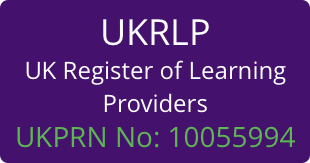
We asked Julie, a mum of three returning to work with no experience of e-learning, to find out what e-learning is all about, and this is what Julie wrote:
Having worked in corporate business for some 20 years I took time out to bring up a young family and only recently re-entered the working world. I very soon started to hear the term ‘e-Learning’, ‘virtual learning environments’, ‘digital education’ and other similar terms. These were all so alien to me, but something told me e-learning wasn’t going to go away and would have an increasingly important role in learning for the future. So I decided I had better find out what it was all about and what follows is what I discovered.
There are many definitions across the blogosphere but in simplest terms e-learning is electronic learning, very often delivered in part or all, via a computer, tablet or phone. E-Learning utilizes electronic technologies to access educational curriculum away from the traditional classroom. In most cases, it refers to a course, program or degree delivered completely online.
There are two main forms of e-Learning. The first is referred to as ‘Synchronous’, where learning is supported by an instructor via the web in real time. These are like ‘virtual classrooms’ where the learner can interact with the trainer through instant messaging, chat and video conferencing. The second form is ‘Asynchronous’ which in simple terms is web based learning where an individual learns at their own pace but without live interaction with the trainer. Examples of asynchronous learning could be modules burnt onto CD Roms or via E Books. The most effective method seems to be to use a combination of the two known as Blended Learning.
Although each report you read differs slightly, all statistics show a healthy growth within the e-Learning sector. One recent report suggested that the worldwide market for Self-Paced E-Learning reached £22.6 billion in 2011 and is expected to reach some £32.7 billion by 2016. Interestingly, the highest growth rate is in Asia at 17.3%, followed by Eastern Europe, Africa, and Latin America at 16.9%, 15.2%, and 14.6%, respectively. (Source E-Learning Market Trends & Forecast 2014 – 2016 Report). The fast paced development in less developed countries appears to be a direct response to Government-funded projects related to literacy development in rural areas. The rapid adoption of mobile technology, including the increase in smartphone uptake has allowed people greater access to the internet which has opened up the exciting new world of e-Learning to them.
Within the Western world, the recent economic downturn and the tightening of general budgets also seem to be a significant drivers in the growth and uptake of e-learning. With the rapid growth and availability of high speed internet access, e-learning has helped significantly reduce the cost of training per employee as travel costs can be removed from training budgets. It clearly offers an efficient and cost-effective method to either replace or compliment face to face learning. E-Learning is especially useful where an organisation has a widely geographically distributed workforce who need to be brought up-to-speed quickly with relevant knowledge and skills.
I have been amazed by the breadth and range of courses and subjects available. Virtually any subject can be supported via e-Learning from time management and minute taking skills to dog grooming and manual handling. E-Learning can be delivered via short courses of maybe only ten minutes at a time to degree level courses taken over several years. An additional benefit of learning this way is the ability to learn at a pace suited to each individual, and unlike classroom based training it is easy to revisit sections or subjects to ensure complete understanding.
Small and medium sized commercial businesses are now able to access these cost effective learning technologies. E-Learning is particularly beneficial where groups of employees need to get up to speed with key compliance subjects for example food hygiene and safety within the catering sector or manual handling. Subjects such as strategy or management training may be more suited to a combination of e-Learning and traditional face to face training to maximise the benefits of learning from others in the group.
E-Learning is not restricted to commercial businesses or home learning but is also increasingly to be found within the education sector itself. Here it opens up all kinds of opportunities for teaching professionals. Lessons can now be supported and followed up with interactive games, quizzes and video based learning to support the syllabus and to check on student understanding. Children in particular in schools respond well to the increased use of technology and adapt quickly to using computers and tablets for maths and literacy games.
Having dipped my toe into the world of e-Learning there is no doubt in my mind that this technology based form of learning is not only very exciting but it is here to stay. Learning will become more accessible, it will no longer be bound by geography or ‘catchment areas’, or age group. The challenge for all businesses and educators is how to effectively incorporate e-Learning into their industry in order to maximise the opportunities it offers. For trainers, the challenge is how to adapt their training into a format suitable for e-Learning.







 UK: 0844 854 9218 | International: +44 (0)1488 580017
UK: 0844 854 9218 | International: +44 (0)1488 580017








